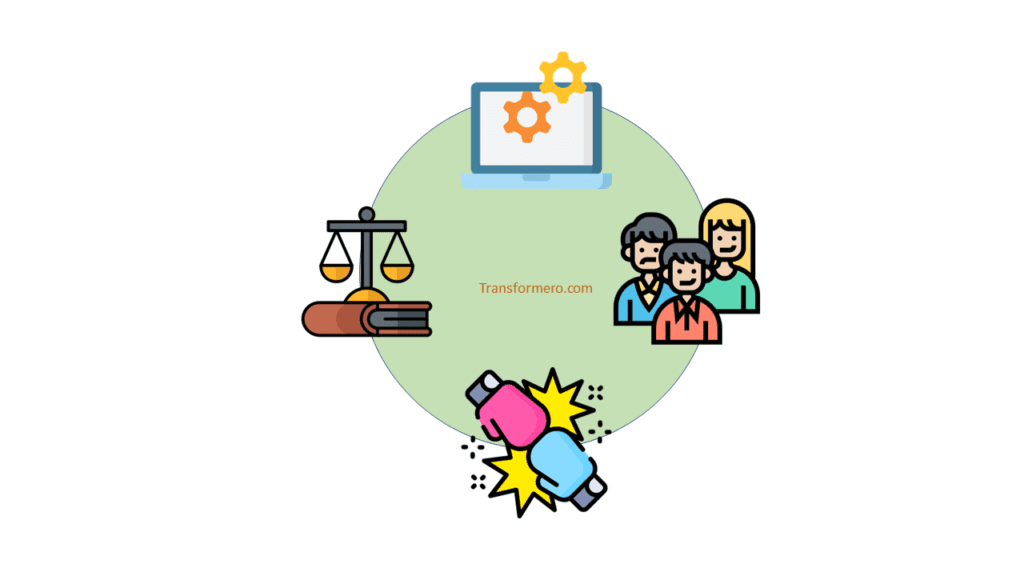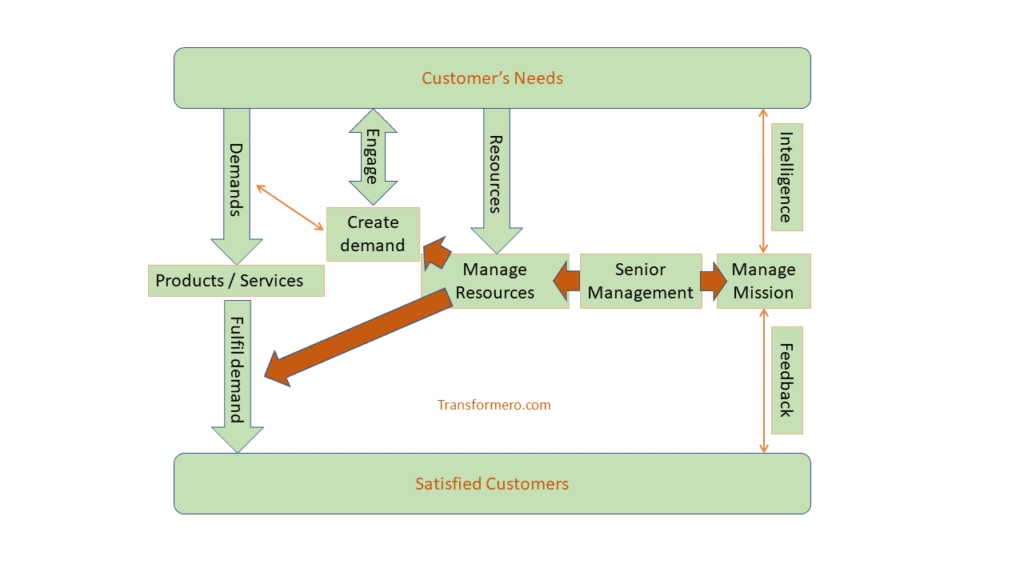Are you currently experiencing performance issues? Are you, or your team, struggling to understand how their actions affect the profit and loss of the company? Has the quality of your service or product dropped, and don’t know how to increase it?
Many businesses, even big corporations, do not have a clearly defined framework to drive business performance.
This article will show how the strategic quality management approach can help you and your team get to the next level.
Why is strategic quality management important?
Quality is a key-value identification factor for every company. Whether you like it or not, the quality of your work will affect your reputation and make you or break you.
Strategic quality management shouldn’t be confused with the system used to manage quality. They are related but not the same.
The strategic side is the framework that ensures all aspects of the company deliver the maximum benefit for your company. The system is the collection of documented processes that will allow you to execute that strategy.
Having a framework that allows you to see the gaps in your company and how to overcome them is crucial to staying relevant in the market.
Strategic quality management allows you to tackle the many challenges a company faces on a day-to-day basis:
- Customer requirements
- Legislation
- Technology
- Competition

What is strategic quality management?
Strategic quality management defines the set of objectives, action plans, and people driving the business. In simple terms, the overall goals are:
- Generate growth
- Reduce waste
- Enhance customer experience
- Provide more value
William Deming, among others, stated that effective quality management starts at the top.
The senior management team (SMT) must commit and buy into quality. Their role is to create the vision and mission for the company and a clear set of objectives that would allow us to reach those goals.
They need to ensure quality is part of those objectives. It’s much better to prevent things than remediate them once they happen.
Once the mission is set, they need to be able to manage the resources at their disposal to satisfy the needs of the customer.
The figure below summarizes the generic system model adopted to define the core concepts of strategic quality management.



The 7 core concepts of strategic quality management
There are seven concepts in strategic quality management:
- Customer focus
- Leadership
- Continuous improvement
- Strategic quality planning
- Design quality, speed, and prevention
- People’s participation and partnership
- Data-driven management
Customer focus
Any business stays in business because it can serve customers through its products or services.
When designing services or products, we must start with the end goal.
What problem are we trying to solve? How can we differentiate ourselves from our competitors?
How can we be unique?
Providing customer value must be part of the company’s mission, and everybody should work towards that goal.



Leadership
“A leader is someone who knows the way, goes the way, and shows the way” – John C. Maxwell.
Most leaders don’t realize the performance of their company is a direct reflection of their leadership.
Leaders must be willing to break barriers and help employees do their work. You won’t last long in business if you expect people to do things you aren’t ready to do. You need to walk the walk.
One of the best examples of leadership in the modern world is Volodymyr Zelenskyy, the president of Ukraine, during the Russian invasion at the end of 2022. You can read a bit about him in the link above. He is an excellent example of a leader.
By the way, leadership is a skill that can be learned, like any other skill.



Continuous improvement
No matter how good your product or service is, we will lose our market share and go out of business if we don’t update or upgrade it.
Continuous improvement is one of the pillars of any business wanting to grow or expand internationally.
Looking at processes, gaps and inefficiencies should be of the utmost importance for senior management.
We can compound the effects of continuous improvement by empowering the experts in each area, the employees.
The employees close to each process are the perfect candidates to inform managers or even lead the change.
The more streamlined this process is, the more secure our position in the market will be.



Strategic quality planning
What do you think is the best approach? To always correct issues or try to prevent them from happening?
In most cases, the answer to this question is to prevent them from happening.
Not only it’s the cheaper option, but also the one that prevents human errors from happening and, ultimately, unsatisfied customers.
Strategic quality planning looks at the processes, products, and services and how to responsibly manage them to meet our customers ‘ expectations.
This is where the quality management system helps deliver this piece of work.



Design quality, speed, and prevention
In the previous section, I mentioned that preventing issues from happening is cheaper than correcting them.
Designing processes, services, and products with quality first in mind can pay massive dividends in the long run.
Embedding quality in the process right from the beginning can also speed up your introduction to the market. All the time spent solving issues can be used to gather customer feedback or improve designs.
Risk assessments are beneficial in the early stages of the design to ensure we build quality from the word go.



People’s participation and partnership
I have touched upon it when talking about leadership but ensuring everybody is committed to the company’s mission is key to its success.
People need to be nurtured and listened to. They need to feel we care to get the best out of them.
While hierarchical, the organizational structure and approach must aim to break barriers between levels and roles.
Senior managers must create an environment where it feels like they are partnering rather than directing people.



Data-driven management
In the technology era, data is everything.
In the blink of an eye, you can get a dashboard to understand customer behavior, seasonality, or how to price a product based on previous data.
But to do that, we must first define what we want to measure. The saying “what gets measured gets done, and what gets done gets measured” is very true.
Senior management must aim to define the critical data points required to make conscious decisions about the business and should aim to utilize data in every aspect of it.
Beware of gathering too much data without purpose. It can clog our judgment and prevent us from making decisions.
We need to make fact-driven decisions as quickly as possible with as much certainty.



The critical factor to strategic quality management and business transformation
These seven concepts are essential for a business looking to improve performance and gain market share, but the human factor makes this strategy successful.
As I have highlighted, none of the above can be achieved without a committed workforce in Leadership and People’s participation and partnership. Leaders must create a set of measures to obtain high performance from their employees.
The critical set of components to strengthen performance consists of four elements:
- Participatory management
- Empowerment
- Recognition and rewards
- Job satisfaction
Participatory management
To get the most out of your people, they need to feel they have a voice and are listened to.
Involving staff in decision-making is one of the most potent ways to drive transformation and quality.
Many modern leadership approaches talk about decentralized command as an effective way to lead the organization.
The decentralized command is not just used in the business world. In “Extreme Ownership,” Jocko Willink, a former navy admiral of the US, talks about decentralized command regarding how US army operations work and how it proved tremendously valuable in Iraq.
You can watch Jocko talk about it in the video below:
Empowerment
Following the above, empowering employees makes them feel like part of the company.
Empowering is not only allowing them to make decisions or delegate. It’s about training, about ensuring they can perform in their jobs, that they can grow, and that they can develop.
Think about it like a cycle. The more trained they are, the better they can perform and the bigger the value they can provide to the business and our customers.
Let’s not fall victim to the old school of management that said, “what if we train our employees and they leave?”
Think about what if we don’t train our employees and they stay.
Very few things are as dangerous as people that don’t care.
Recognition and rewards
Thank you, well done!
Four words can make our employees feel like they are going in the right direction and that we care daily.
Recognition and rewards don’t need to be always in the form of promotions and pay raises.
Recognizing good work should be a priority to strive for excellence in your business.
That doesn’t mean reviewing roles and salaries is not necessary. We must ensure our employees are paid fairly to stay competitive in the current market.
But it also means we must be transparent with them and lay the path for progression and promotion, especially for your high-achievers.
Other rewards companies offer these days are extra holidays, gym passes, or Netflix subscriptions.
Although for me, when somebody goes the extra mile, as the family person I am, I like to offer family activities for people to spend time with their loved ones.
Job satisfaction
Last but not least, people need to be happy in their jobs.
Job satisfaction could be the summary of the three previous points. If our employees feel like they have a voice, are empowered to make their own decisions, and are recognized for doing a good job, we should be good, right?
Not necessarily. Let me explain.
While the three previous points are crucial to job satisfaction, each person is unique and has unique points of view.
Our perspective of their performance could differ from theirs, and they could expect a higher compensation than what you are willing to give.
Challenging situations are present all over the place. Imagine two people in the same department wanting to promote to a managerial role.
Whoever doesn’t get the role will feel like there is no progression path, and their performance could significantly drop if we can’t realign them either for another position or create space for them.
All in all, we aim to develop a collaborative environment and nurture talent.
Conclusion
Strategic quality management aims to satisfy customers by generating growth, removing waste, and enhancing their overall experience.
There are 7 essential concepts in strategic quality management:
- Customer focus: Deliver maximum value to our clients
- Leadership: Walk the walk, show, and go the way.
- Continuous improvement: Work on your weaknesses and challenge your current processes.
- Strategic quality planning: Document, review and plan your procedures and policies.
- Design quality, speed, and prevention: It’s much better and cheaper to prevent things from happening than to correct them.
- People’s participation and partnership: We need people to help us deliver the company’s mission.
- Data-driven management: We must use data to guide our decisions.
People are crucial resources for strategic quality management. They must participate in the decision-making, be empowered to drive changes and be recognized for their excellent work.
I want to thank Andrei and Florin from George Bacovia University for their article on strategic quality management, which served as the basis of this article.